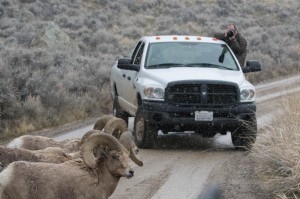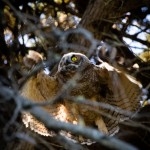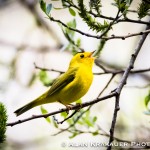 As someone who shares a lot of bird photography, I often get the question “What kind of camera should I get?” There are now a lot of great options so it’s important to think about how you plan to use the hardware. But first let me introduce the two general categories of cameras.
As someone who shares a lot of bird photography, I often get the question “What kind of camera should I get?” There are now a lot of great options so it’s important to think about how you plan to use the hardware. But first let me introduce the two general categories of cameras.
Quick note: I will not be discussing video recording. All cameras will be capable of some video recording, but since there’s less uniformity in what people want out of video, I’m not even going to open that can of worms.
Superzoom/Bridge (Point and Shoot) cameras. These are all-in-one cameras that have a permanently-attached zoom lens. These rank highly on convenience in that they are relatively small and lightweight for the amount of magnification they provide. Also, since their lenses cover a range of focal lengths, you can jump from taking a picture of a distant bird to a portrait of your friend to a wide shot of the sunset without reaching into your camera bag to change glass. Cost is on the lower end as well. The downsides to the smaller size are that the image sensor is smaller and you won’t have the highest quality lens elements. Not all models make manual adjustment of settings or manual focus convenient, so if these are important to you then make sure to study the camera specifications carefully.
Interchangeable Lens Cameras. These are camera bodies that come with separate detachable lenses. They tend to be heavier than the point and shoot cameras, but with larger and better image sensors and typically better responsiveness and controls for advanced shooting. The quality of the image will also depend on the quality of the lenses used, and here there’s a much higher ceiling for price and quality. More on these in a bit.
Which of these types of cameras should I be looking at? Think carefully about the pictures you want to be taking. Here are a few questions that might guide your self-reflection.
- Is it important to get the most difficult photos of birds and other wildlife, such as in low light conditions, birds in flight, etc? (In contrast, will you mainly use your camera for birds at your feeder, birds you see on hikes, waders and waterfowl at the park, perched hawks, etc).
- Are you the kind of person who compares your photos to those you see online from experienced photographers on nature websites, birding groups on social media, etc.? (In contrast, are the photos primarily for you as a record and reminder of nature experiences, to help document and identify birds, etc.?)
- Do you want to do a lot of printing, especially larger prints? (In contrast, will you primarily share small or medium sized photos over email or on social media?)
If you answered NO to all of these questions, then the bridge/superzoom camera may be a good choice for you. These will always be at the ready and can make excellent photos. You can check places like Digital Photography Review to compare the current offerings and find something in your price and feature range.
However, if you answered strongly in the affirmative to any of these, you may be looking for a camera with more responsiveness and potential for better image quality than the point and shoot models can provide.
Mirrorless or DSLR? These are the two common types of modern cameras with interchangeable lenses. DSLR are digital versions of the SLR (Single Lens Reflex) that in normal operation use a mirror to either bounces light up to the eyepiece or to the image-making sensor. In contrast, mirrorless cameras use the imaging sensor for everything – autofocus, showing you the preview on the rear screen or, if present, small screen in an eyepiece, and capturing the image.
In my opinion, there is broad enough overlap between DSLR and mirrorless in size, price, and features that we shouldn’t look at them as completely separate categories. I use a DSLR (Canon brand). Eventually sensors and eyepieces will continue to advance to the point where mirrorless technology has a clear advantage over the (mostly) non-electronic eyepieces and mirrors of DSLRs, and we may already be there with the top-of-the-line models, but at this point both techs offer excellent options for most consumers. That’s not to say there are not differences, but I’m not going to get into them here.
The bigger challenge is to get the most bang for your buck at a given price point, and that is going to mean thinking about both the camera body and the lens. You could have the best camera body in the world but if the glass that passes light from the outside world to the sensor is not of very good quality, then the image will suffer. The goal is to get the brightest, longest lens you can afford and carry around with you. A rough breakdown of telephoto lenses would be:
- 200-300mm: Get your foot in the door. Usually lighter and smaller than the longer options. Especially for small and distant birds, this may not feel like quite enough reach, but is often a good choice if you don’t do a lot of wildlife photography or are starting with a limited budget before you invest more.
- 400mm: This can be a good compromise between portability and reach, although there will be a jump in price from the entry level zooms.
- 600mm: These are now higher quality and cheaper than ever before. The added reach comes with a cost though – they are big (hand-holdable for some but not for all). Great choice if you don’t often stray far from the car or don’t mind lugging around a larger lens.
Here are a few examples of kits to you give a sense of what you might be able to get with your money. Feel free to ask if you have specific questions.
- Budget: ~$600 – This is towards the low end of the possible price scale. Look for either entry model kit (possibly used) with the entry level telephoto zoom lens. Example: Canon T7 + 55-250mm or 75-300mm lens
- Budget: ~$1200 – This opens up a few more options, either to jump in at a higher tier of camera body with an entry level lens, or a slightly older camera body with a lens upgrade (either quality or length). Examples: New Canon T8i + Canon 70-300 IS II; Used Canon 70D + used Tamron 150-600mm G1 or used Canon 300mm f4/L
- Budget: ~$2500+ – Top of the line pro-sumer options, you’ll be able to get the highest grade lenses and very capable body behind it. Large option: Sigma 150-600mm sport, more mobile option Canon 100-400mm mk2 plus Canon 90D or Canon 7D mkii
Buying Used. It is natural to hold some hesitancy about purchasing used equipment. Will it work? Is it stolen? Buying pre-owned can be a great way to stretch your camera dollars. Refurbished items are ones that have been serviced by the manufacturer or authorized technician, and will offer a small discount along with a warranty. There are also reputable used dealers such as MPB.com, KEH.com, or used sections of B&H or Adorama, and of course there’s your local camera store like LookingGlass Photo in Berkeley. These outlets may not match the savings from a rando on Craigslist but they should offer safety and no-hassle returns if the item is not as advertised. Overall they tend to rate the condition fairly conservatively so even if it is not pristine it will likely function perfectly well. And don’t forget to take advantage of these outlets should you want to sell your gear in the process of upgrading your camera kit!


